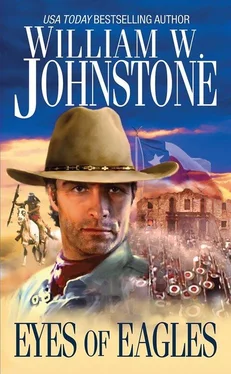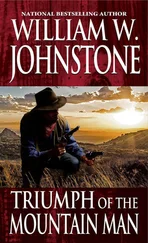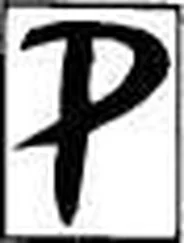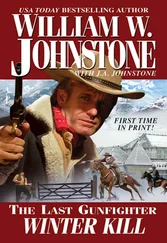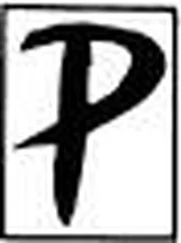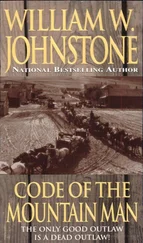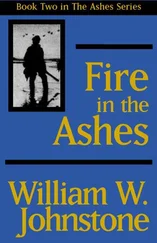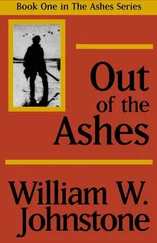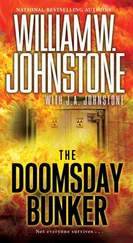Their sergeants and officers shot those men dead.
Jim Bowie cocked his pistols and waited for the door to his room to smash open.
Sam sat on a stool in the corner.
Travis’s slave, Joe, sat at Travis’s desk, his hands by his side. Like Sam, Joe had been ordered to offer no resistance when the door was smashed open.
The plaza of the Alamo was now filled with hundreds of Mexican soldiers.
Almeron Dickerson and half a dozen of his men were at the only cannons still in Texan hands. They loaded the two cannons with whatever they could find, lowered the elevation and touched a torch to the fire-hole. The cannon roared and the rocks and bits of rusty chain and broken pieces of muskets cleared a path fifty feet wide right down the center of the plaza, hurling bloody chunks of Santa Anna’s soldiers in all directions, splattering other soldiers with the blood of their comrades.
The rifles of the Mexican troops cracked and the men manning the last battery of cannon fell dead.
Susanna Dickerson would see her husband one more time — to identify the body.
Troops kicked in the door to Bowie’s quarters and the famous knife fighter lifted his first two pistols and shot two soldiers dead. He tossed the empty pistols aside and grabbed his last two pistols and fired. He had double-shotted these and the four balls struck three Mexican troops. Soldiers scrambled over the bodies of their comrades and pinned Bowie to the cot with bayonets, running him through. Jim Bowie roared in pain, blood spraying from his mouth and with the last of his strength, swung his big-bladed knife at a soldier who had the misfortune to get just a tad too close to Bowie. The knife took the man’s head off clean just as another soldier drove his bayonet through Bowie’s right eye, pinning his head to the wooden frame of the cot. The head bounced once on the floor, the eyes open in astonishment.
Sam sat with his face in his hands, unable to look at the bloody body of the man he’d been with for so long.
Davy Crockett could no longer take the time needed to reload as Mexican soldiers swarmed him. He was swinging Ol’ Betsy like a club, smashing heads left and right. He was bleeding from half a dozen wounds and forced to lean up against the side of the hospital to stay on his feet as his massive strength was ebbing away. Around him lay the bodies of twenty Mexican soldiers. A squad of soldiers rushed him and pinned Crockett to the wall with bayonets, running him through. Davy’s last act was to close one big hand around the throat of a Mexican sergeant and squeeze with all his might. Davy Crockett, with blood leaking from his mouth, grinned in a ghastly manner and said, “Come along, son. We’ll continue this fracas on the other side.”
He died still holding on to the terrified sergeant. Davy slumped over the bayonets that had pinned him to the wall. The sergeant died seconds later, his throat crushed.
No one knows who the last Texan was to die in the Alamo. It might have been Crockett. It might have been a major named Robert Evans, or it could have been a volunteer named Walker. It does not matter. They were all dead.
Santa Anna’s troops had taken the Alamo, but the price they paid was unbelievably high. When the last shot was fired — some fifteen minutes after the last defender was dead — some eight hundred Mexican bodies were sprawled in death in the plaza alone. It was six-thirty in the morning on March 6th, 1836.
Approximately one hundred and eighty-two men had killed over two thousand Mexican troops, over five hundred of those killed in brutal hand-to-hand combat. Many of the dead Alamo defenders still had their hands on their knives, the knives buried to the hilt in soldiers’ bodies. Some still held on to the throats of Mexican soldiers, locked in a death grip.
Many of the Mexican soldiers, much to the disgust of some of their officers and sergeants, threw down their rifles, sank to their knees, and wept openly and unashamedly. They were not weeping for their fallen comrades alone, but for all the brave dead.
Still other Mexican soldiers, their blood hot with rage, went from body to body and fired countless rounds into the dead Texans, then took their knives and mutilated the bodies. It took the officers more than fifteen minutes to regain control of the enraged Mexican soldiers.
Santa Anna still had not made his appearance inside the walls of the Alamo.
Susanna Dickerson, the six or seven other women, the children, and Sam and Joe, remained where they were, under guard of more compassionate and older soldiers. They wished no harm to come to noncombatants.
High overhead, the buzzards, who millenniums past had made a pact with death, were tiny black specks in the cloudless blue sky. They had patience; they could wait. The buzzards were born with the knowledge that sooner or later, death came to everything living.
It was about eight-thirty that morning before Santa Anna rode his horse up to the battered walls of the Alamo, carefully picking his way through the hundreds of bodies of his soldiers. He dismounted and stood for a moment, his nose wrinkled at the smell of death.
“Very distasteful business,” he said to a colonel.
“Quite,” the colonel replied. “But this will surely teach the Anglo revolutionaries a lesson.”
“I’m certain it will,” Santa Anna agreed, then stepped into the plaza through a hole in the wall.
Forty-three
Santa Anna turned to his left upon entering the Alamo. He walked across the wooden bridge over the irrigation ditch and then followed the wall to the officers’ quarters. He looked in, sniffed at the sight of the sprawled and mutilated bodies, and walked on. At the north wall, he stopped and stared up at Travis’s body.
“Colonel Travis, sir,” he was informed. Travis’s body had not been hacked on. Neither had the body of Bowie or Crockett. Most of the other dead were unrecognizable.
“One shot through the head,” Santa Anna said. “I wonder if he killed himself in despair?”
Some historians have toyed with that theory, but reports from Mexican soldiers who were there, both officers and enlisted men, state unequivocally that William Travis fought bravely and was felled by a shot from a Mexican rifle. He did not commit suicide.
Santa Anna shrugged his shoulders and walked on, after giving this command, “Separate the bodies of my brave fallen from this Texas rabble. I wish my men to be buried with dignity.”
They were not. Reports state that many of them were tossed into the beds of wagons, taken some distance from town, and left to rot and be eaten by animals while others were simply rolled into ditches and others thrown into the river.
Santa Anna looked up at the flag that still fluttered proudly over the dead defenders of the Alamo. “Take down that goddamn flag!” he ordered.
What happened to the flag the men from Gonzales brought with them to fly over the mission is unknown. The only flag to survive was the flag the volunteers from New Orleans brought with them. It read: THE FIRST COMPANY OF TEXAN VOLUNTEERS FROM NEW ORLEANS. It was sent to Mexico City.
Santa Anna and escort left the site of Travis’s death and walked over to the east wall, to the artillerymen’s quarters. He looked in. Many of the bodies had been hacked with machetes so fiercely they resembled nothing more than heaps of bloody rags. From there he walked to the edge of the hospital building and his eyes narrowed and his lips turned to cruel slits when he saw Davy Crockett’s big hand still locked in place around the sergeant’s throat.
“Get that hand away from the throat of that brave soldier,” he ordered.
“We tried, sir,” a lieutenant said. “The fingers are in a death grip.”
Santa Anna turned cruel eyes on the officer. “Then either break the fingers free or cut them free.”
Читать дальше
